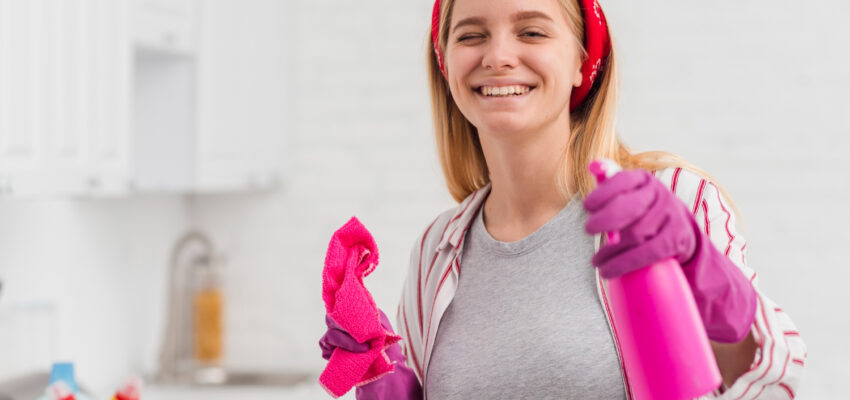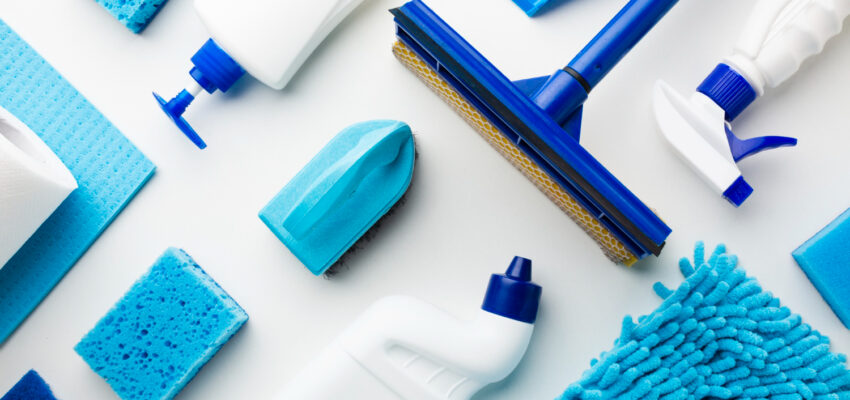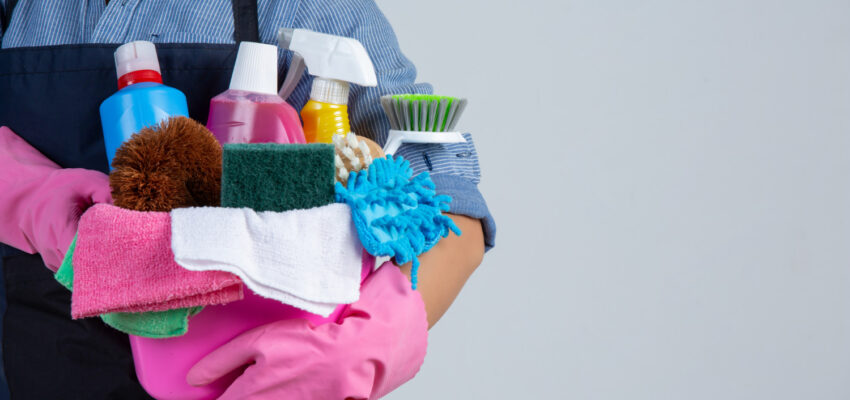How to Keep Your Home Clean
Cleaning refers to the process of removing visible contaminants from surfaces using soap, detergent or other chemical agents. While cleaning does not kill germs directly, harmful pathogens may still remain on surfaces even after having been thoroughly scrubbed clean.
Maintaining order in your cleaning supplies can make the task much simpler, so utilizing a caddy, bucket or tote to carry all of them around can make the task less daunting.
Polished Chrome or Nickel
Choose the appropriate finish for fixtures and hardware in both the bathroom and kitchen is an important decision, as it can give your home an elegant appearance while remaining practical for everyday use. Finishes come and go in fashion; therefore selecting one that works well with existing items is paramount.
Chrome is a timeless metal finish that pairs well with various colours and styles, from rustic to modern. Easy to maintain and durable, chrome requires little upkeep or upkeep over its lifespan without rusting or denting – yet it attracts fingerprints like no other surface can! However, to maintain its appearance be sure to periodically wipe down fingerprints from its shiny surface using soft brushes without harsh steel wool or sponge tools as these could leave behind scratches which diminish its look over time.
Nickel is another versatile material gaining in popularity for its beauty and durability, often seen paired with brass and gold finishes that are currently trending. As an elegant warm choice that blends nicely with these contemporary finishes, nickel can pair nicely with brass and gold finishes as it doesn’t show fingerprints or water spots as easily. When choosing nickel fixtures and hardware make sure that they are high-quality – less costly models tend to flake or tarnish over time making the finish seem obsolete and unattractive.
Brushed nickel is a hardwearing finish designed to withstand everyday use, being more corrosion resistant than chrome and much easier to keep clean than its rival. While nickel may take more effort and care in maintaining than chrome, regular microfibre cloth cleaning with warm soapy water should suffice in removing most smudges and deposits; weekly polishing using Simichrome should help restore shine back into your fixtures or hardware. When your nickel begins tarnish, do not use products containing bleach as this could damage metal and dull finishes; instead, gentle rubbing with soft cloth should remove most tarnishes while reviving its shine back into its shine again.
Tile Grout
Grout is an increasingly popular material used for tile surfaces, yet it often attracts dirt and grime that accumulates over time, discolouring its colour and diminishing its beauty. Furthermore, mould and mildew growth further complicate cleaning efforts. However, grout can typically be restored with some work and supplies you already possess at home.
First step to successful tile and grout maintenance is creating a regular cleaning regimen. For optimal results, schedule weekly cleaning using water mixed with gentle cleaner such as table salt or vinegar; alternatively try an at-home version of commercial grout cleaner such as OxiClean; when selecting one make sure that it has been labelled safe for tile and grout surfaces before testing in small area to make sure no changes take place to their appearance or colour/finish.
Once finished, rinse with clean water and wipe dry to prevent water or cleaner residue from seeping back into the pores of grout. Consider applying a grout sealer over the area in order to protect it against future staining and make your work simpler; how often you reseal is dependent upon how often people visit that spot; two times annually should be sufficient.
When water and soap fail to remove stubborn stains, white vinegar may help. Combine baking soda and water into a paste; then mix in equal parts of white vinegar (regular distilled will do). Apply this solution directly onto grout until it fizzles before scrubbing with a brush or toothbrush until completely fizzled out before rinsing off and leaving to dry fully before allowing anything new to happen.
Areas with high traffic levels will require more regular deep cleaning efforts. Create your own homemade tile grout cleaner and scrub with a stiff-bristled brush or use commercial steam cleaners to loosen stuck-on soiling and dirt; for especially dark and stained grouts, regrouting or reglazing may also be necessary.
High-Touch Surfaces
As people return from being sick, it is crucial that special care be taken in cleaning and disinfecting high-touch surfaces such as desks, counters, door handles, stair railings, elevator buttons, touchpads and restroom fixtures. Such surfaces are constantly touched by multiple people throughout the day and could contain pathogens that spread among workers. High touch surfaces include pens, counters, door handles, stair railings elevator buttons touchpads restroom fixtures pens counters door handles door handles counters door handles door handles stair railings elevator buttons touchpads and restroom fixtures among many others.
These surfaces can quickly become contaminated with bacteria, viruses and other microorganisms due to frequent handling. As such, it is imperative that they are cleaned on an ongoing basis, particularly at this time of year when people return after having been sick. To do this effectively and ensure maximum results.
Cleaning and disinfecting high-touch surfaces are integral parts of business, but especially so in healthcare settings. Health care-associated infections (HAIs) remain one of the leading causes of morbidity and costs in America, but many can often be avoided through better cleaning and disinfection practices.
At first, it is necessary to fully clean a surface, in order to eliminate most germs and debris that would make disinfection harder and could worsen infection rates. Cleaning must always come before disinfection since disinfecting without prior thorough cleaning increases disease spread.
Once a surface has been cleaned, it should be treated with an all-purpose cleaner in order to kill off illness-causing organisms and reduce antibiotic resistant bacteria – two concerns prevalent today in healthcare environments.
Public displays or prominent locations throughout a facility should feature information regarding the cleaning and disinfecting of high-touch surfaces to raise awareness about this essential topic, while encouraging employees to join in the fight against infection spread. This can create an atmosphere of engagement as employees look out for ways to become involved in combatting infectious disease spread.
The Art and Science of Cleaning: A Comprehensive Guide to a Spotless Home
Introduction: In the fast-paced world we live in, finding time to maintain a clean and organized home can be challenging. However, the benefits of a clean living space extend far beyond mere aesthetics. A clean home promotes physical and mental well-being, reduces stress, and fosters productivity. In this comprehensive guide, we’ll delve into the art and science of cleaning, providing you with tips, tricks, and insights to achieve a spotless home effortlessly.
The Psychology of Cleanliness: Before diving into cleaning techniques, let’s explore the psychology behind cleanliness. Numerous studies have shown that a clean environment has a profound impact on our mental and emotional state. Clutter and disorganization can lead to feelings of anxiety and overwhelm, whereas a clean and tidy space promotes relaxation and focus. Understanding this connection can motivate us to prioritize cleanliness as an essential aspect of self-care.
Creating a Cleaning Routine: Consistency is key when it comes to maintaining a clean home. Establishing a cleaning routine tailored to your lifestyle and preferences can help you stay on track. Start by breaking down tasks into daily, weekly, and monthly chores. Daily tasks may include making the bed, doing dishes, and tidying up common areas. Weekly tasks can encompass vacuuming, dusting, and cleaning bathrooms, while monthly tasks may involve deep cleaning tasks such as washing windows and scrubbing baseboards.
Choosing the Right Cleaning Products: With a plethora of cleaning products available on the market, selecting the right ones can be overwhelming. When choosing cleaning products, opt for those that are environmentally friendly and free of harsh chemicals. Natural ingredients such as vinegar, baking soda, and lemon are effective alternatives to commercial cleaners and are safer for both your family and the environment. Additionally, consider investing in reusable cleaning tools such as microfiber cloths and mop pads to minimize waste.
Mastering Cleaning Techniques: Knowing how to clean effectively is essential for achieving optimal results. Here are some tried-and-true cleaning techniques to help you tackle common household tasks:
- Dusting: Start from the top and work your way down, using a microfiber cloth or duster to trap dust particles. Pay special attention to often overlooked areas such as ceiling fans, light fixtures, and baseboards.
- Vacuuming: Use a vacuum cleaner equipped with a HEPA filter to effectively remove dirt, dust, and allergens from carpets and floors. Be sure to vacuum high-traffic areas more frequently and empty the vacuum bag or canister regularly.
- Mopping: For hard surface floors, mop with a solution of warm water and a mild detergent or vinegar. Avoid using excessive water, as it can damage certain types of flooring. Microfiber mops are excellent for trapping dirt and leaving floors streak-free.
- Bathroom Cleaning: Use a disinfectant cleaner to scrub sinks, toilets, and showers, paying attention to areas prone to soap scum and grime buildup. Don’t forget to clean and disinfect frequently touched surfaces such as doorknobs and light switches.
- Kitchen Cleaning: Degrease countertops, stovetops, and appliances with a mixture of warm water and dish soap or a specialized kitchen cleaner. Clean inside appliances such as the microwave and refrigerator regularly to prevent food odors and bacteria growth.
The Power of Decluttering: Clutter not only detracts from the visual appeal of your home but also makes cleaning more challenging. Adopting a minimalist mindset and decluttering regularly can simplify your cleaning routine and create a more serene living space. Start by sorting through belongings and donating or discarding items you no longer need or use. Invest in storage solutions such as baskets, bins, and shelving to keep clutter at bay and maintain an organized home.
Conclusion: Maintaining a clean and organized home is within reach for everyone, regardless of how hectic life may be. By understanding the psychology of cleanliness, establishing a cleaning routine, choosing the right products, mastering cleaning techniques, and embracing decluttering, you can achieve a spotless home that promotes well-being and enhances your quality of life. Remember, cleaning is not just a chore – it’s a form of self-care that nurtures both your physical environment and your soul.



